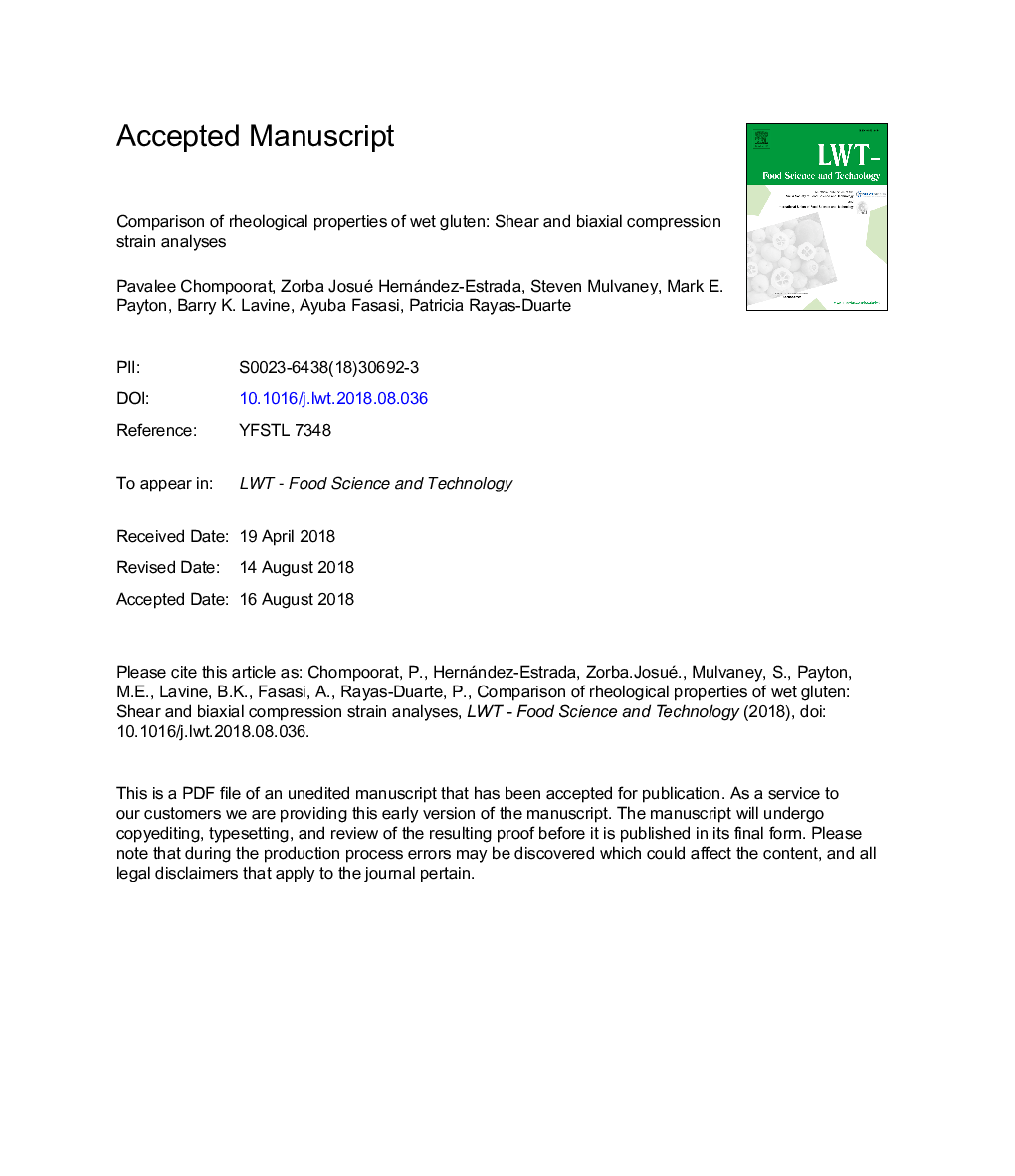| Article ID | Journal | Published Year | Pages | File Type |
|---|---|---|---|---|
| 10130388 | LWT - Food Science and Technology | 2018 | 30 Pages |
Abstract
The objective of this study is to examine the fundamental rheological properties of gluten extracted from six commercial wheat flours and four gluten products (GA, GB, GC and GD) at two substitution levels (3 and 6â¯g/100â¯g). Experimental data from creep-recovery (shear deformation, 100â¯Pa) and compression-recovery (biaxial compression, 8â¯N) tests were fitted into a Burgers model. GA and GC were associated with variation in elastic recovery (strength) and zero-shear viscosity (related to molecular weight) while CB and GD with variation in softening effect that would result in improved extensibility. Differences in composition based on mass-to-charge ratio suggested that GA and GC can form longer polymer chains and have higher LMW-GS and LMW-GS/HMW-GS ratio compared to GB and GD, which form shorter polymer chains. Redundancy analysis clearly separated the effect of gluten substitutions and levels across the six flours in terms of strength and deformability of the structure.
Related Topics
Life Sciences
Agricultural and Biological Sciences
Food Science
Authors
Pavalee Chompoorat, Zorba Josué Hernández-Estrada, Steven J. Mulvaney, Mark E. Payton, Barry K. Lavine, Ayuba Fasasi, Patricia Rayas-Duarte,
